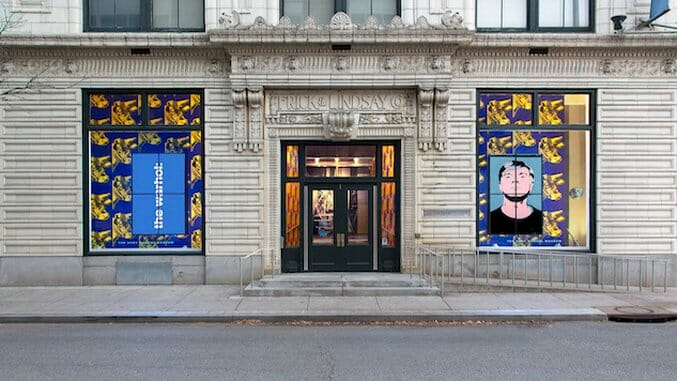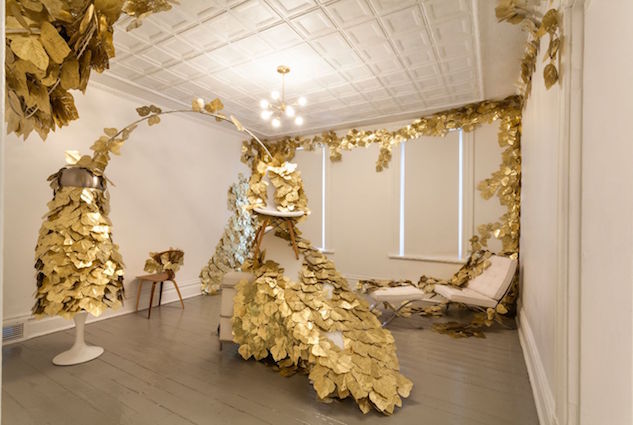Pittsburgh Surprises: The Artistic Side of Steel City
Photo below courtesy of Abby Warhola Travel Lists
Pittsburgh was born for business, thanks to its location at the confluence of the Allegheny and Monongahela Rivers at the head of the Ohio River. And while 19th-century business titans like Andrew Carnegie, Andrew Mellon, and Henry Clay Frick left their lasting marks on the Steel City in which they once lived, Pittsburgh is no longer just a Frontier Village.
When American steel manufacturing collapsed in the eighties, Pittsburgh was also knocked down hard. However, now different engines of change are driving the city’s resurgence: design, technology, and reuse. And art is playing a major role in not only fostering talent, but also giving the city a cultural revitalization.
1. The Andy Warhol Museum
Andy Warhol may be connected to New York City, but this pop art illustrator is actually a Pittsburgh native, and the Andy Warhol Museum is the keeper of his legacy. Its collection encompasses the entire body of Warhol’s work from all periods, from his student projects in the 1940s to his 1980s collaborations with artists Jean-Michel Basquiat and Francesco Clemente. Among its levels, you’ll see family photos featuring a young Warhol, then known as Andrew Warhola, along with his signature portraits of icons including Mao, Elvis Presley and Jackie Kennedy, and his famous Campbell Soup Cans. The film and video collection is extensive, but you can get even closer to the man behind those cans through encased displays of correspondence like a gloved invitation to Michael Jackson’s Thriller release party. Before leaving, visit the Education Studio to try an art project based on Warhol’s experimental techniques.
2. Carnegie Museum of Art
In 1895, Andrew Carnegie put forward an idea to create what now could be arguably called the first modern art museum in America. The steel magnate and philanthropist envisioned an institution that would consist of works by the “Old Masters of Tomorrow” instead of already well-established artists and began as the then called Department of Fine Arts within the Carnegie Institute.
To help acquire pieces for this new museum, Carnegie established a series of contemporary art exhibitions (now known as the Carnegie International) the following year and had pieces featured in them purchased for the museum. Early art belonging to the museum included works by Winslow Homer, Camille Pissarro and James McNeill Whistler. Much has changed since then. Nowadays, with six different departments, the Carnegie Museum of Arts permanent collection boasts more than 30,000 objects spanning pretty much the entire contemporary art spectrum. It’s quite a list of categories: paintings, sculptures, prints, drawings, renderings, decorative arts and design, and film, video, and digital imagery. Plus, in 2001, the museum acquired an archive of nearly 80,000 negatives from the 1930s through 1970s by African-American photographer and Pittsburgh native Charles “Teenie” Harris.
Here’s one more thing: The Carnegie Museum of Art belongs to The Carnegie Museums of Pittsburgh, a collection of four institutions including Carnegie Museum of Natural History, Carnegie Science Center, and The Andy Warhol Museum.
3. The Frick Pittsburgh
Though Henry Clay Frick has ties to Manhattan, particularly his namesake art museum on the Upper East Side, but this financier and art collector had his family residence in Pittsburgh around the turn of the century. Yet their former mansion, called Clayton, would eventually become the permanent address for his daughter, Helen Clay Frick, until her passing in 1984.
Like her dad, Helen had a deep appreciation for art and decided to build a museum on the property to hold her growing collection. Open to the public since 1970, The Frick Pittsburgh displays French 18th-century decorative arts and early Italian Renaissance paintings, alongside special temporary exhibitions.
Art aside, the five and a half acre grounds at The Frick Pittsburgh are worth wandering around. Take a guided tour inside the Clayton, which still contains the Frick family’s belongings, to get an insightful glimpse of Gilded Age living. Also on the property, a Car and Carriage Museum holds the Fricks’ collection of horseless carriages and automobiles dating back to the start of the 20th century. Walk through a path graced with landscaped gardens and spot the greenhouse that’s been in operation since the family’s time here. There’s also an on-site cafe.
4. Mattress Factory
 Photo courtesy of Mattress Factory Facebook
Photo courtesy of Mattress Factory Facebook
Imagine a place that serves as a laboratory for creating art and also provides the residency to do so. Founded in 1977 by artists to support artists working in residence on building site-specific installations, the Mattress Factory is part contemporary art museum and part experimental station. It supports established and emerging artists through its residency program and gives them the guidance, resources, and space to conceptualize art that goes beyond traditional concepts.
Nine formerly empty properties have been repurposed for use as either gallery space, artist housing, or office use. The nonprofit has commissioned new works by more than 650 artists, with projects involving set installations, video, and performance art both thought provoking and unconventional. And creative opportunities are available to all kinds of creatives. In 2003, the Mattress Factory opened an educational studio for creating outreach programs. For example, an ArtLab happens on the first and third Saturday of the month, allowing visitors to experiment with projects modeled after current exhibitions. Community Days happen several times throughout the year.
5. SPACE
As part of the Pittsburgh Cultural Trust’s Visual Arts program, SPACE gives emerging artists not just exhibition space, but the opportunities to advance their work in its collaborative gallery setting. It works as a creative ecosystem within Pittsburgh where artists are given resources and funding plus guidance. SPACE will host five to six annual exhibits.
Next for SPACE is a guest curated exhibition known as John Riegert, an unique art project in which 252 Pittsburgh artists were each asked to do a portrait of this same man. Kicked off in February 2015, the project became an artistic journey, where participants captured Riegert in various places and through different interpretations. This summer 2016 showing closes Sept. 3. SPACE also has a sister gallery, Wood Street Galleries, which features new media artists from around the world.
6. Re:NEW Festival
This year will mark the debut of Re:NEW Festival, a monthlong celebration of Pittsburgh’s reinvention and innovation, scheduled for Sept. 9 through Oct. 9, 2016. Held at various city locations, Re:NEW Festival will feature art exhibitions, markets, expos, and the first North American premiere of Barcelona’s Drap-Art, the International Festival of Recycling Art. Plus, as a project of the Office for Public Art, Pittsburgh Art Places provides an online resource guide listing visual, performing, or literary venues and public artworks in the Greater Pittsburgh region.
Michele is a travel/lifestyle writer who got over her fears and picky eating habits to immerse herself in destinations as far as Fiji, to date. Her work has been featured on Yahoo Travel, ShermansTravel, Budget Travel, and Epicure & Culture.